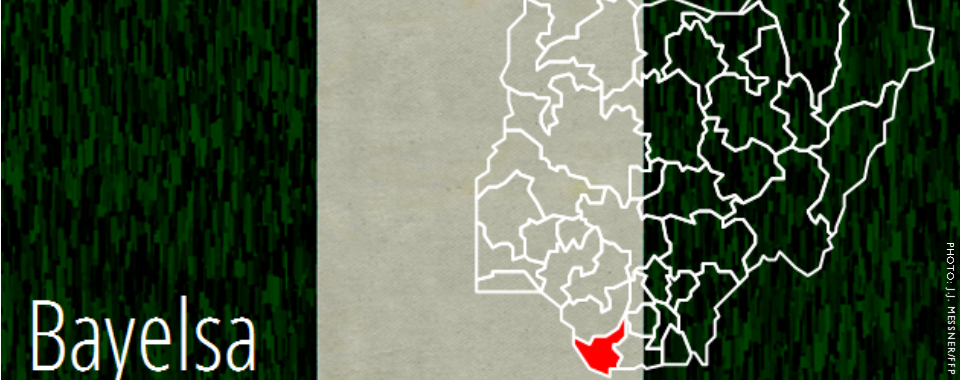BY NATE HAKEN AND PATRICIA TAFT*
With 2 million people, Bayelsa is one of the smallest states in the country, by population. Most are of Ijaw descent. Bayelsa produces between 30-40% of Nigeria’s oil and gas. In addition to the petroleum sector, the state has an extensive commercial fishing industry and produces oil palm, raffia palm, rubber, and coconut.
In February 2012, Henry Dickson (PDP) was elected as governor after a period of uncertainty in the wake of Governor Timipre Sylva’s termination in January 2012.
In the first half of 2013, Bayelsa fell below the Niger Delta regional average in reported incidents of insecurity per capita for the first time since 2010. On June 15, 2013, thousands of cult group members met with political leaders as part of Gov. Dickson’s Restoration Agenda, to renounce criminality and work towards peace.
Over the last four years, incidents of insecurity in Bayelsa have included cult violence, piracy, abductions, and attacks on energy infrastructure. Conflict factors were mainly reported around the capital of Yenagoa.
This Conflict Bulletin provides a brief snapshot of the trends and patterns of conflict risk factors at the State and Local Government Area (LGA) levels, drawing on the data available on the P4P Digital Platform for Multi-Stakeholder Engagement (www.p4p-nigerdelta.org). It represents a compilation of the data from sources listed below, not necessarily opinions of FFP or any other organization that collaborated on the production of this bulletin.
The summaries draw on data collected by FFP’s UNLocK, the Council on Foreign Relations’ NST, WANEP Nigeria, CSS/ETH Zurich, Nigeria Watch, NEEWS/TMG, and ACLED integrated on the P4P platform. They also draw on data and information from “Violence in Nigeria: Patterns and Trends,” by Patricia Taft and Nate Haken (Springer Press, April 2015).
*Hannah Blyth and Ania Skinner also contributed to this report.
